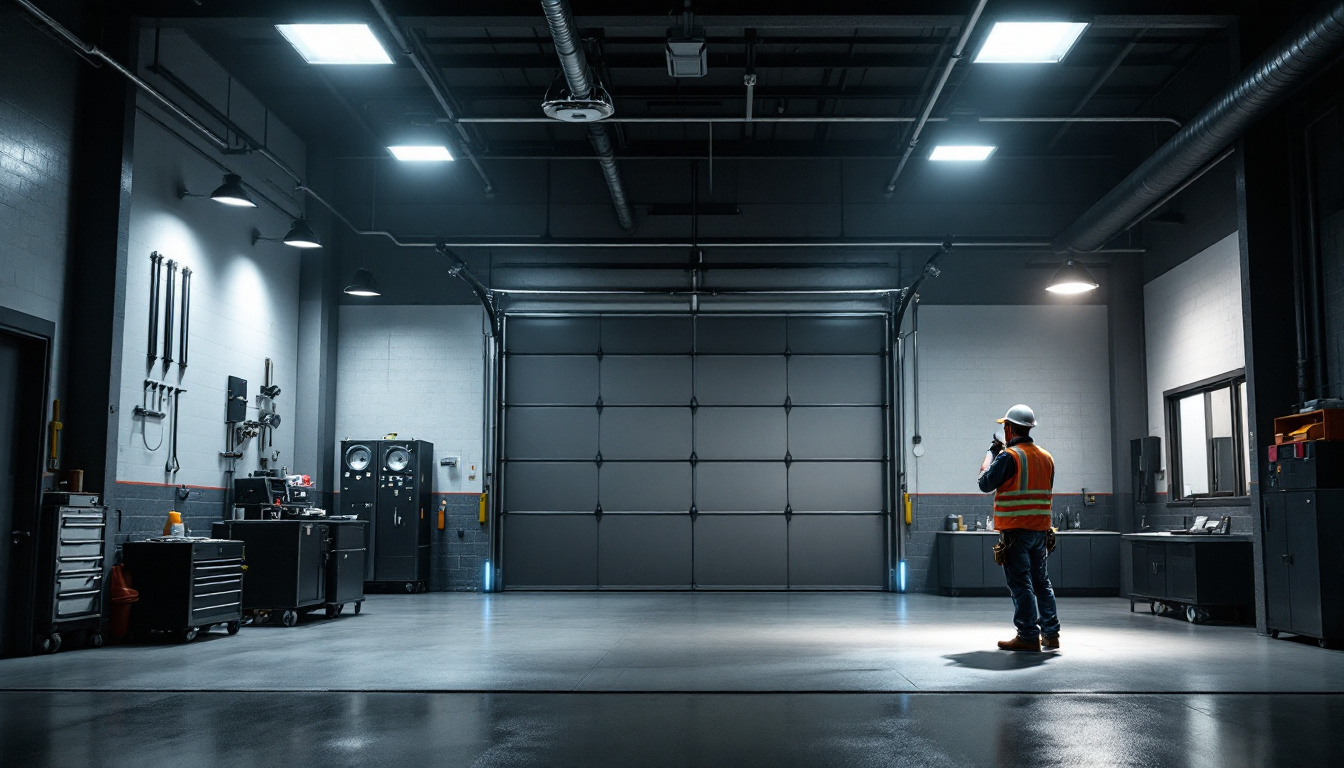
Lighting contractors play a crucial role in ensuring that residential, commercial, and industrial spaces are illuminated effectively and efficiently. One of the key aspects of this profession involves understanding light bulb base measurements. Clients often expect contractors to possess a comprehensive knowledge of the various types of light bulb bases and their compatibility with fixtures. This article delves into the essential aspects of light bulb base measurements, providing insights that every lighting contractor should know.
Light bulb bases are the components that connect the bulb to the fixture. They come in various shapes and sizes, each designed for specific applications. Understanding these bases is fundamental for lighting contractors, as it directly affects the performance and safety of lighting installations.
There are several types of light bulb bases, each serving a unique purpose. The most common types include:
Accurate base measurements are critical for several reasons. First, they ensure that the bulb fits securely in the fixture, preventing any risk of electrical faults or damage. Second, they help in selecting the correct bulb type for specific applications, optimizing energy efficiency and light output. Lastly, understanding base measurements aids in compliance with safety standards and regulations.
Moreover, the choice of base can influence the aesthetic appeal of a lighting fixture. For instance, certain bases are designed to be more visually appealing, complementing the overall design of a space. A well-chosen base not only enhances functionality but also contributes to the ambiance of a room, making it essential for interior designers and homeowners alike to consider both form and function when selecting light bulbs.
Additionally, advancements in lighting technology have led to the development of new base types and configurations. Innovations such as smart bulbs often come with proprietary bases that may not be compatible with traditional fixtures. This evolution highlights the importance of staying informed about the latest trends and technologies in lighting, ensuring that installations are both modern and efficient. As the industry continues to evolve, understanding the nuances of light bulb bases will remain a key component of effective lighting design and implementation.
When dealing with light bulb bases, contractors should be familiar with the standard measurements that define each type. These measurements are typically expressed in millimeters and can vary significantly between different base types.
The Edison screw base is one of the most common types used in residential lighting. The two most prevalent sizes are:
Both sizes are compatible with a wide range of fixtures, making them versatile choices for contractors.
Bayonet bases are less common in residential settings but are essential in specific applications. The most notable size is:
Understanding the dimensions of bayonet bases is vital for ensuring compatibility with fixtures, especially in commercial or industrial environments.
GU bases are particularly popular in modern lighting solutions, especially with the rise of LED technology. Key measurements include:
Contractors must be adept at identifying these bases to ensure proper installation and functionality.
Clients often have specific expectations when it comes to lighting installations. Understanding these expectations can significantly enhance the contractor-client relationship and lead to successful project outcomes.
Clients expect contractors to possess in-depth knowledge of bulb and fixture compatibility. This includes understanding which bulb bases work with specific fixtures and the implications of using incorrect bases. For instance, using an E26 bulb in a fixture designed for E27 could lead to performance issues or even safety hazards.
Additionally, clients appreciate when contractors can recommend the best bulb types for their specific needs, whether for energy efficiency, brightness, or color temperature. This level of expertise builds trust and confidence in the contractor’s abilities.
In many cases, clients may seek advice on upgrading their existing lighting systems. This could involve transitioning from traditional incandescent bulbs to more energy-efficient options like LEDs. Contractors should be prepared to explain the benefits of various bulb types, including their base measurements and compatibility with existing fixtures.
Moreover, understanding the latest trends in lighting technology can help contractors provide informed recommendations that align with clients’ preferences and budget constraints.
Clients expect contractors to prioritize safety and compliance in all lighting installations. This includes adhering to local building codes and safety standards related to electrical installations. Knowledge of light bulb base measurements is essential in this regard, as using the wrong base can lead to electrical failures or fire hazards.
Contractors should also be aware of any certifications or ratings that bulbs may need to meet, ensuring that all installed lighting solutions are safe and reliable.
While understanding light bulb base measurements is crucial, contractors often face challenges in ensuring compatibility. These challenges can arise from various factors, including the diversity of bulb types and the rapid pace of technological advancements.
The lighting industry is filled with a multitude of bulb types, each with its unique base measurements. This variety can create confusion, especially for contractors who may not be familiar with every type. For example, distinguishing between similar-looking bases, such as E26 and E27, requires a keen eye and a solid understanding of measurements.
Contractors can mitigate this challenge by maintaining a comprehensive reference guide or database of bulb types and their corresponding base measurements. This resource can serve as a quick reference during installations and consultations.
The lighting industry is continuously evolving, with new technologies emerging regularly. LED bulbs, smart lighting solutions, and other innovations often come with unique base designs and measurements. Staying updated on these advancements is essential for contractors to provide accurate recommendations and installations.
Participating in industry training sessions, workshops, and seminars can help contractors stay informed about the latest trends and technologies in lighting. This knowledge ultimately benefits clients and enhances the contractor’s reputation.
Another challenge contractors may face is educating clients about light bulb base measurements and their significance. Many clients may not understand the importance of selecting the correct base or the implications of making incorrect choices.
Contractors can address this challenge by taking the time to explain base measurements during consultations. Providing visual aids, such as diagrams or samples, can help clients grasp the concepts more effectively. This proactive approach not only builds trust but also empowers clients to make informed decisions.
To effectively navigate the complexities of light bulb base measurements, lighting contractors can adopt several best practices that enhance their expertise and service quality.
Keeping an inventory of common bulbs and their bases can save time and streamline installations. By having a selection of popular bulb types readily available, contractors can quickly address client needs and provide immediate solutions.
This practice also allows contractors to familiarize themselves with various bulb types, enhancing their knowledge and confidence during consultations.
Having the right tools for measuring and identifying bulb bases is essential. Investing in calipers or measuring tools can help contractors accurately determine base sizes and ensure compatibility with fixtures. Quality tools can also enhance the precision of installations, reducing the likelihood of errors.
Additionally, leveraging technology, such as mobile apps or software that catalog bulb types and measurements, can further streamline the process.
The lighting industry is dynamic, with new products and technologies emerging regularly. Lighting contractors should prioritize continuous learning and training to stay updated on the latest trends and advancements.
Participating in industry associations, attending trade shows, and enrolling in relevant courses can provide valuable insights and networking opportunities. This commitment to learning not only benefits the contractor but also enhances the overall service provided to clients.
Understanding light bulb base measurements is a fundamental aspect of being a successful lighting contractor. Clients expect contractors to possess comprehensive knowledge of various base types, their measurements, and compatibility with fixtures. By meeting these expectations, contractors can build trust, enhance client satisfaction, and ensure safe and effective lighting installations.
As the lighting industry continues to evolve, staying informed about new technologies and trends will be crucial for contractors. By adopting best practices, maintaining an inventory of common bulbs, and prioritizing continuous learning, lighting contractors can position themselves as experts in their field, ready to meet the diverse needs of their clients.
Ready to elevate your lighting projects with the best products on the market? Look no further than LumenWholesale for all your lighting needs. Our extensive selection of spec-grade lighting products is designed to meet the highest industry standards, ensuring that you deliver exceptional quality to your clients. With unbeatable wholesale prices and the convenience of free shipping on bulk orders, LumenWholesale is your go-to source for reliable, high-performance lighting solutions. Don’t let inflated markups stand in the way of your success. Wholesale Lighting at the Best Value is just a click away. Experience the difference with LumenWholesale today!

Discover how light trim can transform projects and boost success for lighting contractors.

Explore the impact of garage lighting on the profitability of lighting contractors.

Discover the essential role outdoor house lamps play in modern lighting design and why every contractor should prioritize them.

Discover how under counter kitchen lights can transform your lighting installation projects by enhancing functionality and aesthetics.